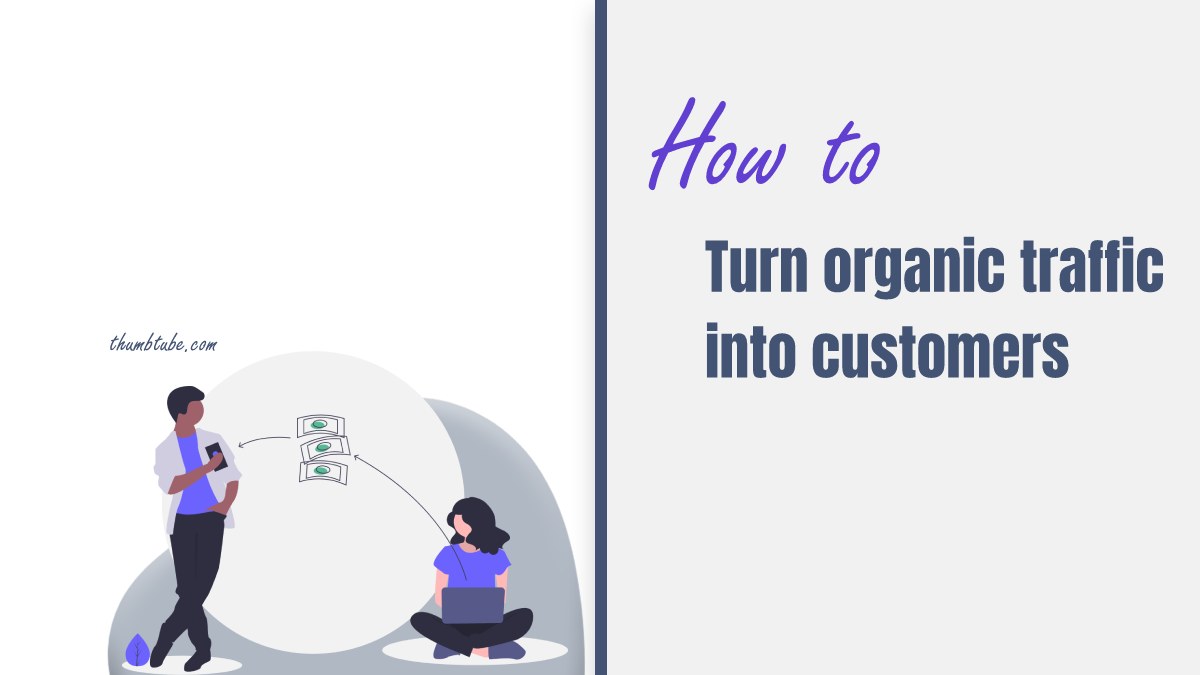Everyone knows that increasing organic traffic to your website is essential for positioning it near the top of the SERP. Converting organic traffic to customers is the next step toward increasing successful conversions. Sometimes, it’s not as easy as it seems.
Let’s look at organic traffic, why it matters, and strategies to turn clicks into cash.
Google Ranking and Tracking Your Site
When internet searchers look for your product or service, you want your business to rank at the top of the search engine results page (SERP). Expensive advertising is one way some companies achieve that goal, but for many others, it’s through optimizing their web content for the search engine’s algorithm that is key.
By crafting high authority content on your website, you can improve its appeal and relevancy to Google searchers. That can be much less expensive than pay-per-click advertising. Of course, as you develop your content, it’s also fundamentally important to monitor your website ranking for your target keywords.
When you’re paying someone to create your content, you need to be able to gauge how effective their work is. That often means updating your content to maintain your ranking. You’re in a competition. So, don’t forget that others will notice and react as you get more successful.
There are some common strategies businesses use to increase their organic traffic. Search Engine Optimization (SEO) is the broadest category of these strategies, but they often dovetail with other communications and marketing techniques.
For instance, creating educational and instructive content is one way to boost your organic traffic. Then, use all your data gathering tools to understand what got them to your site, how they interacted with it, and what they might be seeking from you. Then, communicate with them through emails, newsletters, social media, and other marketing strategies to increase your firm’s relevancy.
Anything that delivers what your customers want is going to help your organic traffic but focus on quality information, insight, and advice. Then, once they’re clicking around your site and in your funnel, make sure you do all you can to harness the power of your increased organic traffic and turn clicks into paying customers.
That’s how you make money.
Harvest Leads and Manage Mailing Lists With an Email Client
As soon as an internet user lands in your funnel, you should try to capture their email address. Whether through a registration portal or a discount program, getting this vital information is a means of maintaining communication with a potential client.
Even if you don’t necessarily achieve the ideal click-through and conversion to a sale, having a potential customer’s email address is a way to increase your brand authority and keep your firm’s name in the forefront of their mind. The next time they’re thinking about your product or service, you’re already in their inbox and a click away from another visit to your site.
Each of the leads you capture will end up on an email list. You’ll need an email client to manage the information you collect. The last thing you want to do is set yourself up for hours of tedious work, maintaining the list yourself. Email clients use technology to simplify your database maintenance, bringing seamless functionality to what can sometimes be quite clunky.
They also have the functionality required for users to unsubscribe automatically. It’s not that you want people to opt-out of communications, but maintaining a reliable and straightforward method for people to unsubscribe from your emails is a requirement of the CAN-SPAM Act. With fines for each errant email potentially running in the mid-five figures, this is not something you want to risk running afoul of.
Promote a Webinar via Email for a Big Audience
Using analytics to understand what your users are looking for and what keywords they enter into their searches is the first big step toward increasing traffic and successful conversions. However, to keep the ball rolling, you also need to make sure that you capitalize on your position by delivering sticky content that keeps them coming back for more.
Let’s assume you are already creating highly relevant content in different formats like blog posts, infographics, videos, and more. Why not tap into your email list and invite all of these potential clients to a webinar?
This might seem like a daunting task, but it’s an ideal way to get your brand’s message out to people who have already found their way into your funnel. These aren’t just general consumers. They’re close enough to your orbit that they’re already on your list. Plus, you’re doing it all without paying for any advertising.
If you take advantage of the best webinar platforms on the market and already have established content, bringing your organic traffic to the next level and turning clicks into conversions is simple. And it’s scalable, consistent, and long-lasting too.
As a bonus, once you’ve recorded your webinar, you can also publish it on multiple channels. For example, perhaps you can transform it into a slide show and use internal linking on all your content pages to refer users to it. Then you can also post it and all your content to YouTube, Facebook, Twitter, Vimeo, and all your other channels.
Transform Organic Traffic Into Paying Customers
Making sales and putting money in your pocket is the goal. Reaching it takes dedication and persistence, and you can’t afford to count increased organic traffic as a win. Getting eyes on your website or other channels is only half the battle.
You’ll still need to communicate with your potential clients to analyze what they want, how you can deliver, and ultimately develop a lasting relationship. Using an email client to manage a list of users who interact with your website allows you to seek their input on your brand. It can also lead to referrals and even more customers.
And if you really engage all the tools at your disposal, you’ll use your email content to invite them to a webinar, where you can demonstrate that your product or service is valuable, relevant, and necessary. Then, all you need to do is make sure you have the business processing capabilities required to scale up to your increased demands.



